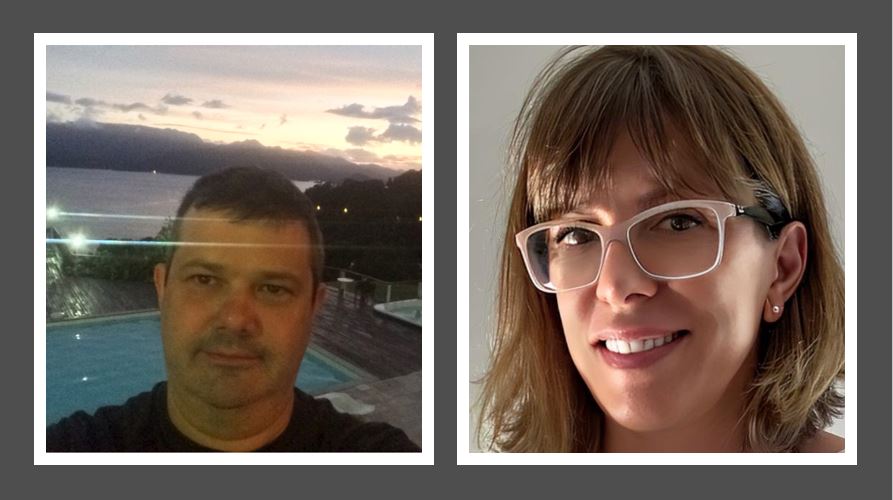 *By Daniel Luis Notari and Ana Cristina Fachinelli Bertolini
*By Daniel Luis Notari and Ana Cristina Fachinelli Bertolini
THE news of a possible “Accumulated rainfall could exceed 800 mm in Rio Grande do Sul” published on April 30, 2024 seemed unimaginable. Four weeks later, another news published on June 1st confirms that it rained as expected in Caxias do Sul in the month of May, being the highest volume of rain recorded in a single month. It is noteworthy that more than 70% of this volume rained in the first ten days of May, corresponding to approximately 45% of the forecast for the entire year. The exceptional nature of the rains and their immediate impact resulted in the channeling of all this water in the Serra Gaúcha to the valley region (Lajeado, Taquari, Rio Pardo, São Sebastião do Caí, among other cities), flowing into the Guaíba Estuary. This culminated in the biggest flood in Porto Alegre and the metropolitan region.
Chaos broke out in Rio Grande do Sul, with thousands of people displaced, streets and cities inaccessible, landslides, earthquakes, among other calamities. At the same time, an unprecedented solidarity campaign mobilized donations and assistance from everywhere. City halls, state government and various entities began to demand software solutions to help with volunteer management, donation management, shelter locations, among others.
In times of discussions about Smart Cities, Resilient Cities, artificial intelligence and meteorological prediction models, few of these technologies proved effective when the catastrophe occurred.
The international standard ISO 37122 for smart cities plays a crucial role in implementing services using advanced technologies in urban management. In other words, the standard and its indicators are fundamental for monitoring progress in the use of technology and municipal development as a whole. It is necessary to meet requirements that respond to challenges such as climate change, rapid population growth and political and economic instability; use modern information and technologies to offer better services and quality of life to inhabitants; provide a better living environment; and achieve environmental and sustainability objectives in a more innovative way.
THE Building Resilient Cities 2030 Initiative (Making Cities Resilient 2030 – MCR2030) is a unique action between actors committed to local resilience through the defense of causes, sharing of knowledge and experiences between cities, establishment of mutual learning networks, coordination between different levels of government, and building partnerships. By providing a clear resilience roadmap, technical expertise and monitoring tools, the MCR2030 initiative will support cities on their journey to reduce disaster risk and build urban resilience.
The challenge of transforming a city into an intelligent and resilient one is foreseen in government actions such as the Brazilian Charter of Smart Cities. Currently, the state of Rio Grande do Sul reacts with an immense network of collaboration, volunteers and donations from across the country and abroad. We wonder whether this could have been avoided, prevented or minimized in its intensity. We will never know the definitive answer. What we can do is learn from the events (third heavy rain in 10 months) by developing contingency plans, educating the population about extreme events, as well as observing what other cities, states and countries have done in similar events.
Make a city smart and resilient It is costly and involves investment in sensors, data acquisition networks, data processing, and construction of management tools to understand this data to assist in decision making. Furthermore, it is necessary to evaluate the use of alarm systems for the population, such as those used in the United States during extreme weather events.
Another important point is that this needs coordination. Isolated initiatives to develop tools and platforms are being carried out to assist in this extreme event, such as to monitor the level of water from the Guaíba Estuary; platforms to report risk situations, record occurrences and analyze indicators to take decisions more agile and efficient; the Abrigo RS and Flood Support solution aims to to connect the shelter needs of society; and others solutions to assist in disaster control.
We are part of the group of search from the City Living Lab at the University of Caxias do Sul (UCS). Recently, our WhatsApp group was flooded with discussions about what could be done to help in the short term. One of the initiatives involved a webinar entitled “Rio Grande do Sul and Floods: Current Knowledge and Paths for Risk Reduction”, with the participation of the group's researchers and panelists Nathan dos Santos Debortoli and Pedro Ivo Mioni Camarinha, discussing the recent floods, strategies to minimize future risks and Canada's experiences with climate change. Another initiative involved the signing of a agreement between the City Hall and the University of Caxias do Sul to organize an action plan aimed at preparing the municipality for increasingly frequent climate events, making Caxias do Sul a resilient city. This agreement consists of applying a methodology developed by City Living Lab researchers to collect and analyze data and generate a mapping of the state of the city's resilience factors based on scientific models of resilient cities.
Ultimately, there is a need for greater integration between governments, universities, institutions and society in the search for solutions to make our cities more intelligent, sustainable and resilient, as well as prepared for current and future challenges.
*Daniel Luis Notari is a Researcher at ABES Think Tank and professor at the University of Caxias
*Ana Cristina Fachinelli Bertolini is a professor at the University of Caxias do Sul.
Notice: The opinion presented in this article is the responsibility of its author and not of ABES - Brazilian Association of Software Companies













